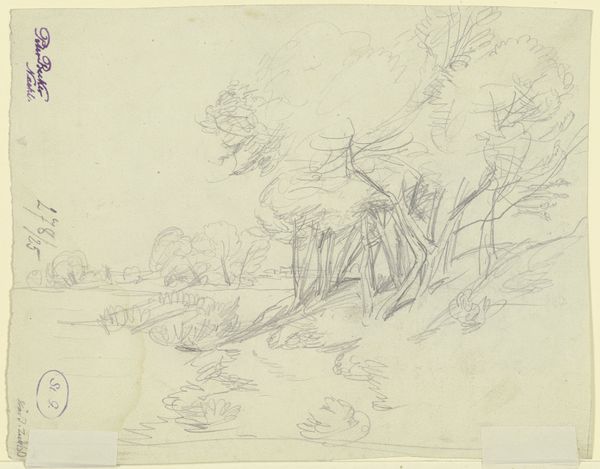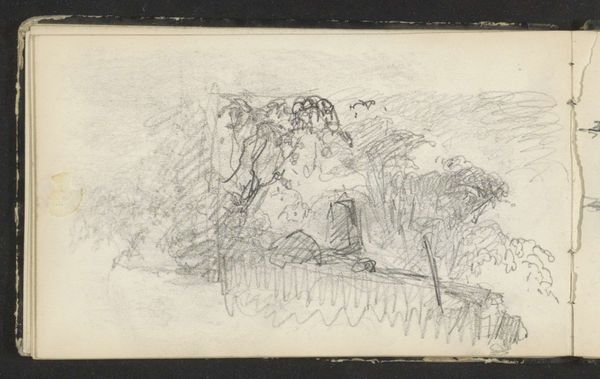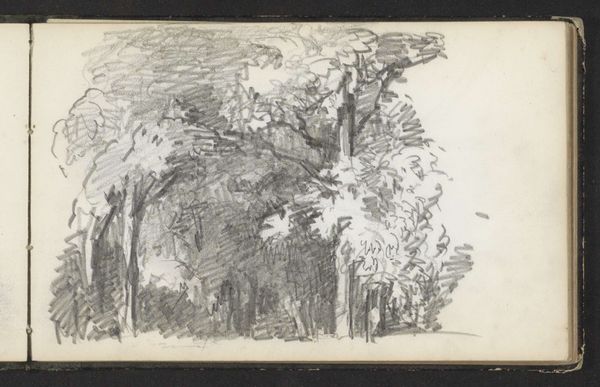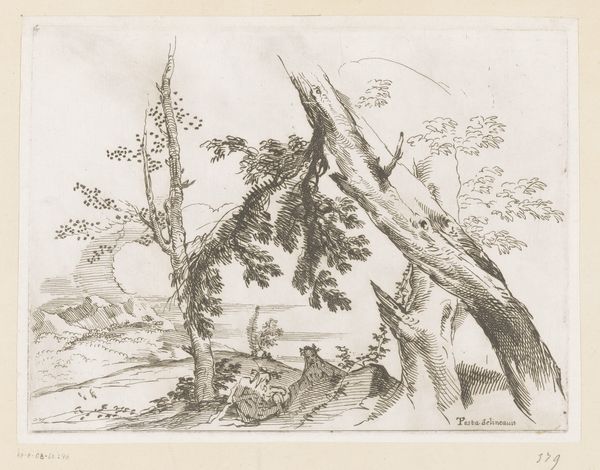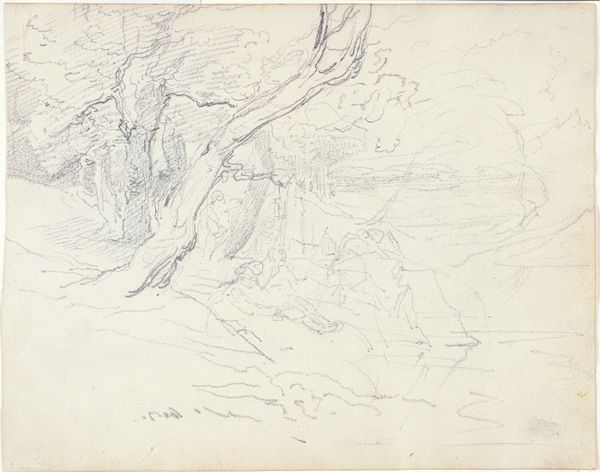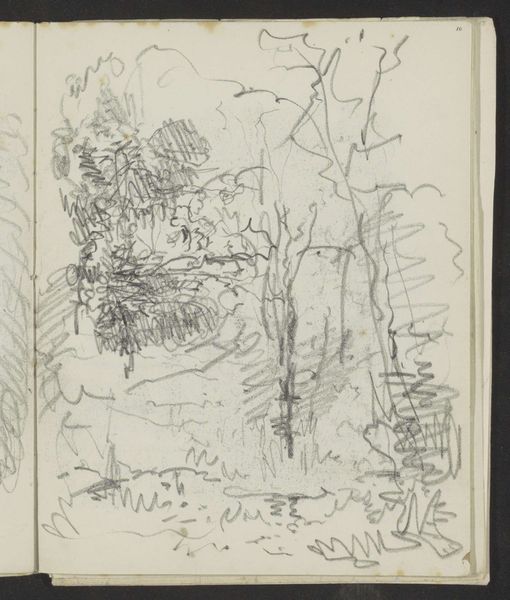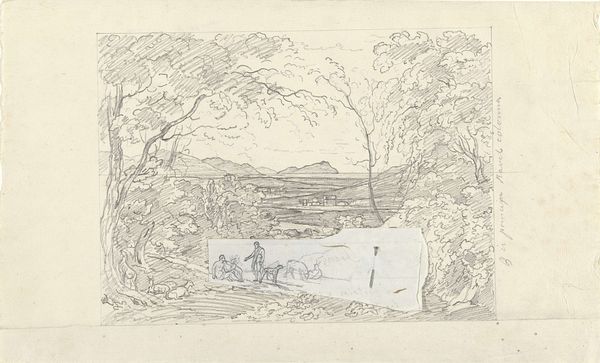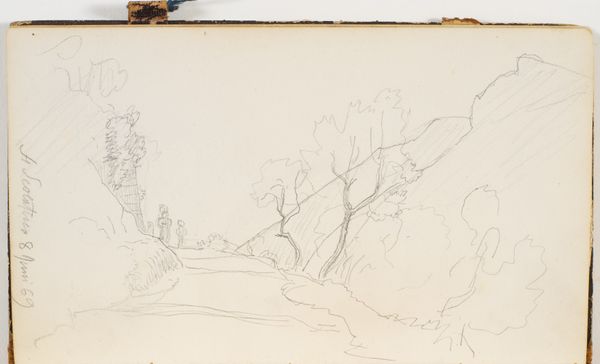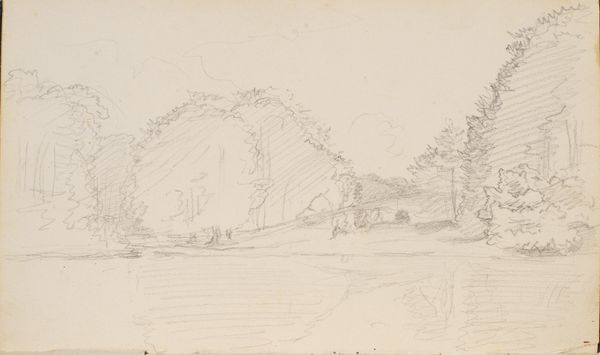
Dimensions: 17.5 x 70.0 x 25.0 cm
Copyright: Public Domain
Curator: Look at this unassuming pencil drawing by Max Beckmann, simply titled "Female Dancer," created sometime between 1935 and 1958. It is held in the Städel Museum. Editor: My first thought is that it's incredibly atmospheric. All those feathery lines give a real sense of depth to what seems to be a study of woodland. Is that figure at the top meant to be the dancer? Curator: Well, it's certainly debatable. The title provided might mislead us, as it's difficult to recognize it as a dancer. There's that smaller, almost incidental figure near the upper right that some interpret as a man, maybe a figure related to Beckmann’s time teaching at art schools. It’s really about the layering of the graphite creating density and a kind of texture—almost frottage like. Editor: I see what you mean about texture. I'm interested in this idea of it being preparatory. This might challenge traditional views, and show us more about labor by suggesting a shift towards conceptual ideas, less focus on the artist as skilled craftsman, more on recording process and creating sketches to support mass production? Curator: Exactly, it’s this very questioning of definition what is supposed to be called “high art” is a main topic that surrounds Beckmann’s images. The artist escaped Germany under Nazi censure in 1937, teaching in Amsterdam, then later in the U.S., specifically St. Louis. This would have greatly changed the production circumstances he was subjected to! The landscape, seemingly bucolic, perhaps reveals something about displacement. Editor: Absolutely. The weight of history really presses on it, doesn’t it? Especially if we view it under the influence and political turmoil that followed as context in which the drawing came to life. This impacts my interpretation as the woods in the composition no longer appear soothing, rather it conveys some solitude during an intense, historically important time. Curator: And in a way, we also must consider the act of drawing itself. Graphite on paper, readily available, easily concealed… It’s a directness that circumvented more overtly politicized or policed means of production. Editor: Thinking about it more, perhaps the real power lies in the inherent contradictions and ambiguities within, given the social, material, and conceptual layering. Curator: Agreed. These unassuming strokes contain far more than initially meets the eye, providing insights into a pivotal era and the conditions in which artistic production had to find its place.
Comments
stadelmuseum about 2 years ago
⋮
Beckmann only ever made eight sculptures and, in their production, was influenced by topics that preoccupied him his entire life, such as dance and vaudeville. Beckmann’s “Dancer” poises in a deep split and bends her upper body far forward, with her head nearly touching a shin. Beckmann does not show the young woman on stage. Rather, he caught a moment in which the dancer seems to stretch. All the virtuosity and lightness that is usually associated with dance has left the figure. With her narrow, crouched pose and rather ungainly limbs, Beckmann created a decidedly unusual sculpture. It illustrates his idea of the existential threats to human existence, which he experienced as being determined by hardship and struggles against dark forces.
Join the conversation
Join millions of artists and users on Artera today and experience the ultimate creative platform.
